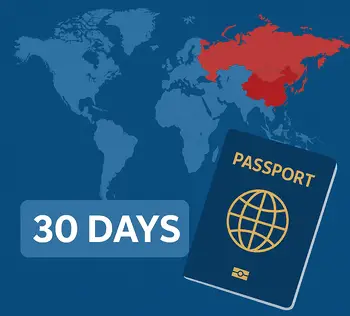
China’s permanent residency system, commonly known as the “China Green Card,” represents one of the world’s most selective immigration pathways.
Since its establishment in 2004, the system has undergone significant transformation as China balances traditional caution toward immigration with growing needs for international talent.
This analysis examines the history, current state, and future trajectory of China’s permanent residency framework.
Historical Development
From Isolation to Selective Opening
China’s approach to immigration has been shaped by its complex history.
Following the founding of the People’s Republic in 1949, China maintained strict control over foreign influence, with international arrivals dropping sharply through the 1950s and reaching minimal levels during the Cultural Revolution.
The post-1979 reform era marked a pivotal shift as China prioritized economic modernization and gradually opened its borders.
However, unlike the “emigration craze” that saw millions of Chinese citizens move abroad, immigration to China remained tightly controlled, with no formal permanent residency pathway until the early 2000s.
The 2004 Milestone
The formal establishment of China’s permanent residency system in 2004 through the “Administrative Measures for the Examination and Approval of Foreigners’ Permanent Residence in China” represented a watershed moment.
However, the initial system was extraordinarily restrictive, with only high-level executives, notable contributors to science and technology, and certain family members qualifying.
Between 2004 and 2013, only approximately 7,000 foreigners received permanent residency—a minuscule figure for a nation of China’s size and global importance.
Timeline of Key Policy Developments
| Year | Policy Development |
|---|---|
| 2004 | Introduction of China’s first permanent residency system |
| 2013 | Early reforms and local experimentation in cities like Shanghai |
| 2016 | Major policy overhaul with lowered thresholds and expanded eligibility |
| 2018 | Establishment of National Immigration Administration (NIA) |
| 2020 | Comprehensive reforms expanding eligibility pathways |
| 2023 | Regional pilot programs and further streamlining of procedures |
Current Eligibility Pathways
Today’s permanent residency system offers several distinct pathways, each with specific requirements:
Eligibility Pathways for China Permanent Residency
| Pathway | Key Requirements | Target Demographic |
|---|---|---|
| Investment-Based | $500K-$1M investment maintained for 3+ years | Foreign investors and entrepreneurs |
| Employment-Based | Senior position for 4+ years or exceptional skills | High-skilled professionals and academics |
| Family Reunification | Marriage to Chinese citizen/PR for 5+ years | Spouses and dependents of Chinese citizens/PRs |
| Special Contributions | Extraordinary contributions to China’s development | Scientists, cultural figures, and sports stars |
| Regional Pilot Programs | Varies by region (often with lower thresholds) | Industry-specific talents based on regional needs |
Application Process and Challenges
The application process typically involves consultation with local authorities, extensive document preparation, submission, multi-agency review, and card issuance if approved.
The entire process can take 6-12 months or longer.
Applicants frequently encounter several obstacles:
- Documentation burden: Extensive paperwork requirements
- Processing delays: Review periods frequently extend beyond official timeframes
- Inconsistent implementation: Significant variation across different regions
- Language barriers: Limited English-language resources
- Changing requirements: Frequent policy adjustments
Recent Policy Developments
The 2020 Reform Package
February 2020 marked a significant milestone with comprehensive reforms that lowered investment thresholds, expanded talent categories, streamlined application procedures, enhanced benefits for permanent residents, and created special provisions for high-demand professionals.
2023-2024 Regional Initiatives
Recent years have seen the introduction of localized policy experiments with varying requirements and benefits:
Regional Variations in China’s Permanent Residency Policies
| Region | Special Provisions |
|---|---|
| Shanghai | Expanded eligibility for financial professionals |
| Beijing | Special provisions for scientific researchers |
| Greater Bay Area | Talent attraction initiatives with streamlined processing |
| Hainan Free Trade Port | Simplified procedures and lower thresholds |
| Western Regions | Lower investment requirements and industry incentives |
Digital Transformation
Application processes have increasingly embraced technology, including online submissions, electronic verification systems, digital tracking, virtual interviews in some locations, and blockchain-based credential verification pilots.
Permanent Residency Approval Trends
While exact figures aren’t consistently published, estimates show a gradual increase in approvals:
Estimated Permanent Residency Approvals
| Period | Approvals (est.) | Notes |
|---|---|---|
| 2004-2013 | ~7,000 | Initial restrictive phase with extremely limited approvals |
| 2013-2016 | ~3,000 | Gradual increase as reforms began to take effect |
| 2016-2020 | ~10,000 | Accelerated growth following major policy reforms |
| 2020-2023 | ~15,000 | Continued growth despite pandemic restrictions |
Comparative Perspective
China’s permanent residency system remains significantly more selective than those of other major economies.
While countries like Canada and Australia approve hundreds of thousands of permanent residency applications annually, China’s numbers remain in the low thousands.
The application procedures involve more documentation and longer review periods than most developed nations.
Additionally, Chinese permanent residents face more restrictions than their counterparts in many Western countries.
Benefits of China Permanent Residency
Despite the challenges, permanent residency offers substantial advantages:
- Unlimited stay: No need to renew visas or temporary residence permits
- Work freedom: Ability to change employers without new work permits
- Business opportunities: Right to establish companies under the same conditions as Chinese citizens
- Property rights: Fewer restrictions on property purchases
- Education access: Children can attend public schools under the same conditions as Chinese citizens
- Healthcare access: Eligibility for the public healthcare system
- Travel convenience: Multiple entries and exits without additional visas
Future Outlook
China’s permanent residency system continues to evolve, with several trends likely to shape its future development:
- Integration with talent strategies: Coordination with educational recruitment, industrial priorities, and research initiatives
- Balanced approach: Continued expansion for high-demand skills while maintaining selectivity
- Gradual harmonization: Moving toward more standardized international practices
- Digital transformation: Further implementation of technology to streamline processes
- Regional differentiation: Continued experimentation with localized policies
Conclusion
China’s permanent residency system reflects the nation’s complex relationship with immigration—balancing the need to attract global talent with traditional caution toward permanent settlement by foreigners.
While the system has become more accessible in recent years, it remains highly selective.
For professionals, investors, and families considering long-term settlement in China, understanding the nuances of the permanent residency system is essential. The pathway requires careful planning, patience, and often specialized guidance.
However, for those who qualify, permanent residency offers significant advantages in one of the world’s most dynamic economies.
As China continues its economic development and global engagement, further evolution of its permanent residency system seems inevitable, likely reflecting broader strategic priorities:
- attracting innovation-driving talent
- addressing demographic challenges
- maintaining social stability while gradually integrating into global migration governance frameworks.
Sources and Further Reading
- National Immigration Administration of China – Official website for immigration policies and announcements
- China’s Migration Trends and Policies – Federal Agency for Civic Education
- Trends and Changes in China’s Permanent Residence Policies – Ikky In China
- The New Foreign Permanent Resident ID Card in China – China Briefing
- China Migration Policy: Key Insights – Immigration to China
- Liu, Y., & Zhang, Q. (2023). “Comparative Analysis of Immigration Policies in Major Economies.” International Migration Review, 57(3), 782-805
- Wang, L. (2024). “Regional Variations in China’s Immigration Policies.” Journal of Chinese Governance, 9(1), 45-67


